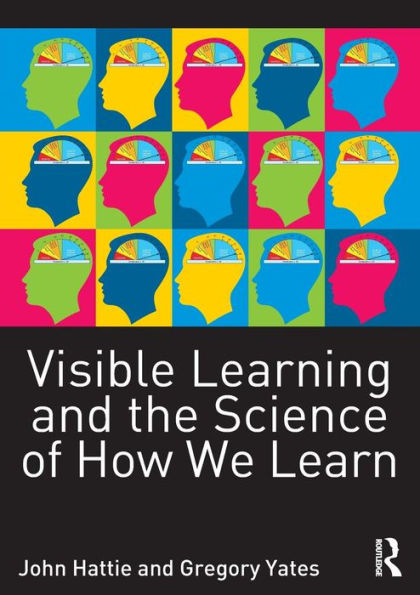Visible Learning and the Science of How We Learn / Edition 1 available in Paperback

Visible Learning and the Science of How We Learn / Edition 1
- ISBN-10:
- 0415704995
- ISBN-13:
- 9780415704991
- Pub. Date:
- 10/04/2013
- Publisher:
- Taylor & Francis
- ISBN-10:
- 0415704995
- ISBN-13:
- 9780415704991
- Pub. Date:
- 10/04/2013
- Publisher:
- Taylor & Francis

Visible Learning and the Science of How We Learn / Edition 1
Paperback
Item is available through our marketplace sellers and in stores.

Product Details
| ISBN-13: | 9780415704991 |
|---|---|
| Publisher: | Taylor & Francis |
| Publication date: | 10/04/2013 |
| Edition description: | New Edition |
| Pages: | 368 |
| Product dimensions: | 6.80(w) x 9.60(h) x 0.80(d) |
About the Author
Customer Reviews
Explore More Items
A publisher in New York asked me to write down what I know about the Greek gods, and I was like, Can we do this anonymously? Because I don't need the Olympians
* “In a feat worthy of his heroic subjects, Riordan
Percy Jackson isn’t expecting freshman orientation to be any fun. But when a mysterious mortal acquaintance appears on campus, followed by demon cheerleaders, things quickly move from bad to
When the goddess Artemis goes missing, she is believed to have been kidnapped. And now it's up to Percy and his friends to find out what happened. Who is powerful enough to kidnap a goddess? They
This boxed set brings together the first three paperbacks in
All five books in the Heroes of Olympus saga—in a paperback boxed set of
Thor's hammer is missing again. The thunder god has a disturbing habit of misplacing his weapon--the mightiest force in the Nine Worlds. But this time the hammer isn't just lost, it has fallen into
Anastasia's tenth year has some good things, like falling in love and really getting to know her grandmother, and some bad things, like finding out about an impending baby brother.
The morning bell has rung at Watertower Elementary School, and it’s time for Mrs. Pidgeon’s class to turn to page
Delia loves Double Dutch
DEM BONES GONNA RISE AGAIN
With their neighborhood basketball court destroyed by vandalism, Ziggy, Rashawn, Jerome, and Rico don't know how they're going to spend summer vacation. Then Ziggy has a
